Scathing NASA report lays bare how Boeing’s disastrous Starliner left two astronauts stranded in space
A damning new report from NASA exposes how “Boeing’s ineffective quality management” left two astronauts stranded aboard the International Space Station.
The report from NASA’s Office of the Inspector General even calls for “financial penalties” for the aerospace giant’s “failure to adhere to quality control standards.”
All summer, debate raged within the space agency over how best to rescue the first two people to pilot Boeing’s long-awaited Starliner spacecraft, which was scheduled to carry the duo into space and back for nine days in June.
But while that expedition lasted into August — and both astronauts are likely to remain in space well into 2025 — NASA OIG worked with Pentagon investigators to look into Boeing’s “numerous administrative errors.”
A damning new report from NASA has exposed how “Boeing’s ineffective quality management” left two astronauts stranded aboard the International Space Station (ISS). Above, a NASA image from July shows Boeing’s troubled Starliner spacecraft as it is now attached to the ISS
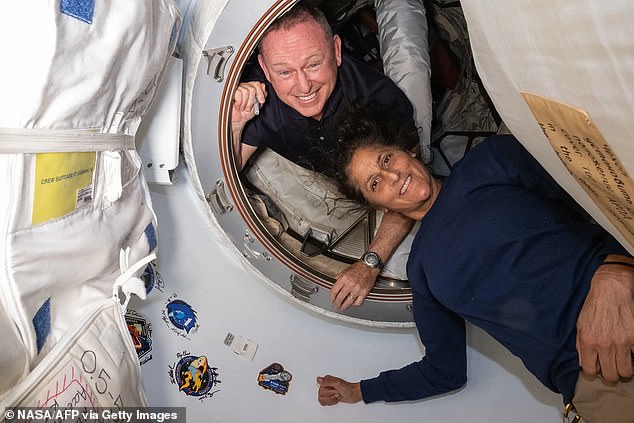
While Boeing has been claiming for weeks that its Starliner capsule is safe enough to return astronauts Sunita Williams and Butch Wilmore to Earth, the new report from NASA’s Office of the Inspector General (NASA OIG) raises new questions about the spacecraft’s safety.
“Boeing’s process to address the deficiencies to date,” the space agency’s top watchdog said in their reportwhich was published on Wednesday, “has not proven to be effective.”
Worse, NASA OIG continued, “The company has generally failed to take corrective action when the same quality control problems have reoccurred.”
In one case, a liquid oxygen tank dome — an integral piece of the hardware needed to house the Starliner’s highly explosive rocket fuel — was found isolated for possible destruction due to “Boeing’s unsatisfactory welding.”
This poorly installed fuel dome, intended for one of NASA’s Space Launch System (SLS) Core Stage 3 rockets, was seen by NASA OIG officials themselves.
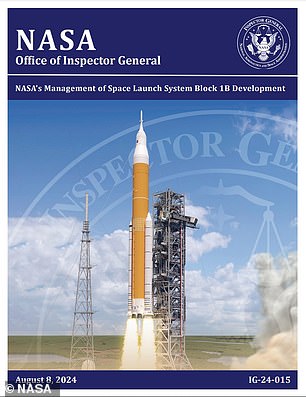
NASA OIG report has called for ‘financial sanctions’ for Boeing’s ‘failure to comply with quality control standards’ (front page above)
To investigate many internal problems with Boeing’s construction of the Starliner, the space agency’s regulators enlisted the help of officials from the Pentagon’s Defense Contract Management Agency (DCMA).
“DCMA issues Corrective Action Requests (CARs) to the contractor,” the new NASA report said. “CARs are labeled Level I through Level IV, with Level I being the least serious deficiency.”
The DCMA team was tasked with “overseeing the production of Boeing’s core and upper stages” at NASA’s Michoud Assembly Facility in New Orleans. The team ultimately delivered a total of 71 Level I and II CARs between 2021 and 2023.
A draft version of an even stricter Level III CAR was drawn up, which would have alerted Boeing’s top brass and could have led to withholding of contract payments. However, this version was not sent.
“According to DCMA officials, this is a high number of CARs for a space system at this stage of development,” NASA’s OIG report said, “and reflects a recurring and deteriorating state of product quality control.”
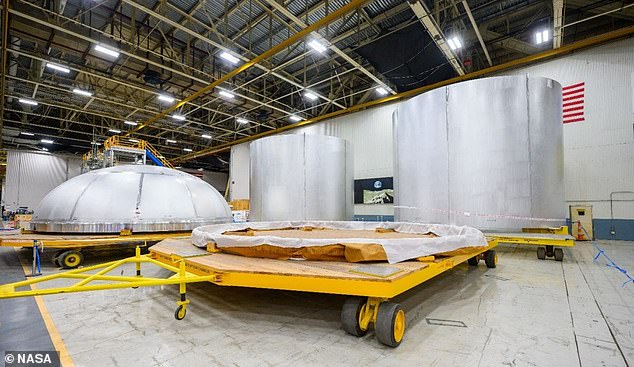
In one case, a critical liquid oxygen tank dome was found isolated for possible removal due to “unsatisfactory Boeing welding.” Above is a photo of the improperly welded dome (left) at the Michoud Assembly Facility, as published in the new NASA OIG report
The poorly welded fuel tank dome was a repeated and highlighted concern for NASA OIG, which attributed the problem to poor hiring and training practices.
“According to NASA officials, the welding problems were caused by Boeing’s inexperienced technicians and inadequate planning and supervision of work orders,” NASA OIG said.
“The lack of a properly trained and qualified workforce increases the risk that Boeing will continue to produce parts and components that do not meet NASA and industry standards,” the agency’s report said.
Pentagon DCMA officials noted that Boeing had filed a nonconformity report acknowledging that the dome was not suitable for use in space.
Yet in their new report, NASA OIG highlighted the numerous and seemingly systemic problems Boeing faced in developing the Starliner aircraft.
“Boeing officials improperly approved processing of the hardware under unacceptable environmental conditions, and accepted damaged seals and submitted them to NASA for inspection,” the inspector general concluded.
The aerospace company, NASA OIG found, “also used outdated versions of work orders.”
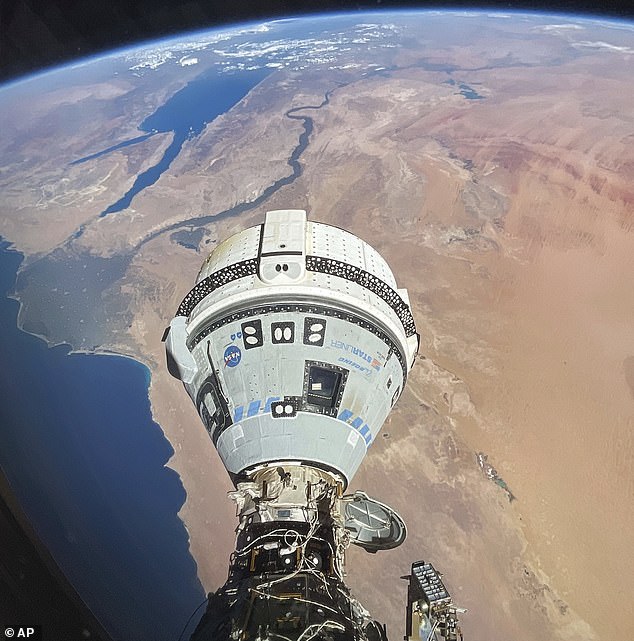
Boeing insists its capsule (pictured) can still safely bring the astronauts home. But the company said Wednesday it would take steps to return the capsule empty if that is NASA’s final decision on the matter.
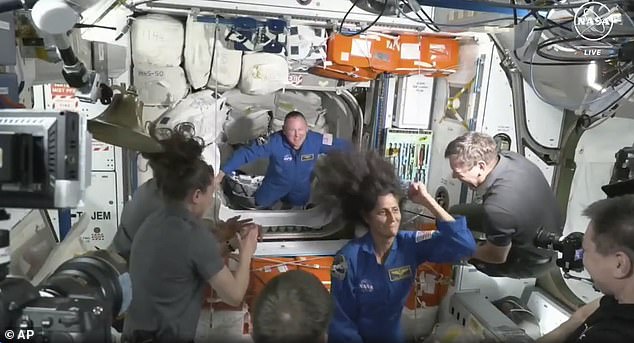
NASA OIG worked with Pentagon investigators to look into Boeing’s “numerous administrative errors.” Above, NASA astronauts Butch Wilmore and Suni Williams are greeted by the ISS crew upon their arrival aboard the Boeing Starliner spacecraft on Thursday, June 6, 2024.
Outside the OIG, NASA officials are deeply irritated by the suggestion that Wilmore and Williams are stranded or trapped.
NASA has stressed from the beginning that if an emergency occurs on the space station, such as a fire or loss of cabin pressure, Boeing’s Starliner could still be used by the pair as a lifeboat to leave the space station.
A former NASA administrator said Thursday that the astronauts are “a little bit stuck” but certainly not stranded.
They’re safe aboard the space station, have enough supplies and there’s work to do, said NASA’s Scott Hubbard, who served on the Columbia Accident Investigation Board in 2003.
Boeing, however, has insisted that the capsule can still return the astronauts home safely.
But the company said Wednesday it would take steps to return the capsule empty if NASA decides to do so.
Last week, the company published a list of all the tests conducted with the boosters since launch.
“We continue to believe in Starliner’s capabilities and its flight logic,” the company said.
